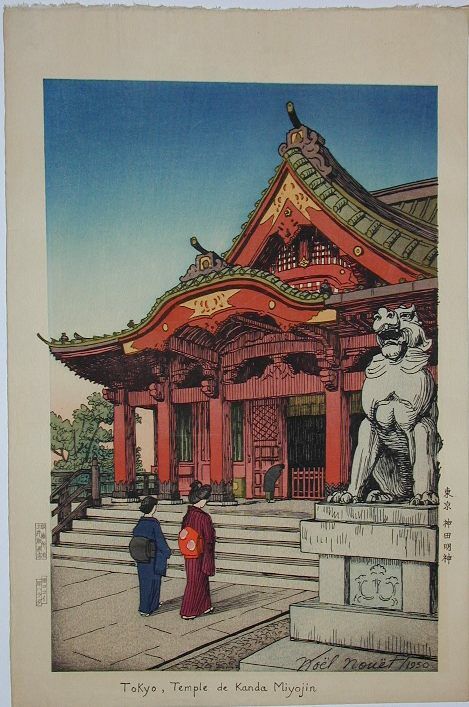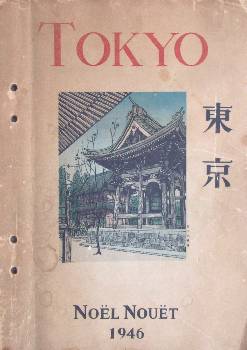
Any serious collector of shin-hanga certainly has come across the woodblock prints of Noel Nouet. They depict sights of Tokyo, but not in the typical way of the shin-hanga style, but at the first glance, they look like a french pen and ink drawing that later was overlaid with watercolors. Indeed, the distinctive element was a pen drawing, which later was converted into the keyblock.

In the 1930's he created a series "Ten Views of Tokyo", which is his most prominent work It is still under discussion among shin-hanga researchers, whether the keyblocks of the prints of Noel Nouet are indeed real woodblocks - taking into account the amount of lines to carve - or simply metal plates (zinc), which easily can be turned into printing plates by photographical transfer and subsequent chemical etching. Although Mrs. Suzue Doi, the widow of the late Eiichi Doi and whose father already was the publisher of the Nouet prints, told the author that all keyblocks of Nouet's prints were handcarved, it should be mentioned that the use of metal plates was not unknown in the woodblock print world - as we know, many keyblocks of Yoshida Hiroshi prints are actually produced as zinc metal plates.

